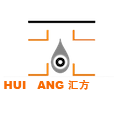Not only the garments, cups, caps, scarves, jewelry, shoes, tv, containers, mobile phones, but also the electrical autos, drones and many more advanced smart industrial equipments are rapidly exporting to the whole world market at much lower cost and leading Artificial Intelligence technology…why the Chinese got such a rapid development?Did they learned the economical magics?
The rapid development of smart industrial equipment and factories over the past decade can be attributed to several key factors that have collectively driven innovation, efficiency, and competitiveness in manufacturing. Here’s a detailed look at these driving forces:
1. Advancements in Technology
- Internet of Things (IoT): The integration of IoT technology has enabled machines and devices within factories to communicate with each other and with centralized systems, facilitating real-time data collection and analysis. This connectivity supports predictive maintenance, optimized production schedules, and improved supply chain management.
Artificial Intelligence (AI) and Machine Learning (ML): AI and ML algorithms are used to analyze vast amounts of operational data, leading to more intelligent decision-making processes. These technologies help in identifying patterns, predicting failures, and automating routine tasks, thereby enhancing productivity.
- Automation and Robotics: Advanced robotics and automation solutions have revolutionized manufacturing floors. Robots equipped with sensors and AI capabilities can perform complex tasks with higher precision and speed than human workers, reducing errors and increasing output.
2. Government Policies and Support
- Strategic Initiatives: Many governments worldwide have launched initiatives aimed at fostering the adoption of smart manufacturing technologies. For example, China’s “Made in China 2025” plan seeks to upgrade the manufacturing sector through advanced technologies. Similarly, Germany’s “Industry 4.0” strategy promotes the digital transformation of industry.
- Funding and Incentives: Governments provide financial support, tax incentives, and grants to encourage businesses to invest in smart technologies. This assistance helps lower the initial costs and risks associated with adopting new systems.
3. Economic Factors
- Cost Reduction: Smart factories often lead to significant cost savings by optimizing resource usage, minimizing waste, and reducing downtime. Efficient operations also allow for better scalability and flexibility in responding to market demands.
- Increased Competitiveness: Companies that implement smart technologies gain a competitive edge by being able to produce higher quality products faster and at lower costs. This advantage is crucial in global markets where competition is fierce.
4. Consumer Demand and Market Trends
- Customization and Personalization: Consumers increasingly demand personalized products, which requires manufacturers to adopt flexible production methods. Smart factories enable just-in-time manufacturing and mass customization without sacrificing efficiency.
- Sustainability: There is growing pressure from consumers and regulators for companies to adopt sustainable practices. Smart factories can monitor and reduce energy consumption, emissions, and material waste, aligning with environmental goals.
5. Workforce Evolution
- Skill Development: The rise of smart factories necessitates a workforce skilled in handling advanced technologies. Training programs and educational reforms focus on developing expertise in areas like data science, AI, and robotics, ensuring that employees can effectively operate and maintain smart systems.
- Collaborative Work Environments: Smart factories promote collaboration between humans and machines. Enhanced communication tools and collaborative robots (cobots) facilitate smoother workflows and safer working conditions.
6. Global Connectivity and Collaboration
- Supply Chain Optimization: Improved connectivity allows for better coordination across global supply chains. Real-time tracking and automated logistics ensure timely delivery of materials and finished goods, reducing bottlenecks.
- Knowledge Sharing: International collaborations and partnerships facilitate the exchange of best practices and innovations. Joint ventures and research projects contribute to the continuous improvement of smart manufacturing technologies.
7. Education System Reform
- Focus on STEM Education: There has been a significant push towards strengthening STEM education from primary school through university levels. Universities have expanded their programs in engineering, computer science, and other technical disciplines, producing graduates ready for industrial roles.
- Higher Education Expansion: Over the past few decades, China has significantly increased access to higher education. The number of universities and colleges has grown, along with the enrollm
ent rate. This expansion has allowed more students to pursue degrees in critical industrial fields.
International Collaborations: Chinese universities frequently partner with foreign institutions to offer joint degree programs, exchange programs, and collaborative research projects. This exposure helps students gain international perspectives and cutting-edge knowledge.
8. Vocational Training and Lifelong Learning
- Vocational Education Institutions (VEIs): China has invested heavily in VEIs that provide specialized training in various industrial sectors. These institutions work closely with industries to ensure that curricula are relevant and up-to-date, preparing students for immediate employment.
- Continuing Education: Recognizing the need for continuous learning, China promotes lifelong education opportunities. Workers can update their skills through adult education programs, online courses, and corporate training initiatives, ensuring they remain competitive in rapidly evolving industries.
Conclusion
The convergence of technological advancements, supportive government policies, economic benefits, changing consumer preferences, evolving workforce capabilities, and enhanced global connectivity has propelled the rapid development of smart industrial equipment and factories. As these trends continue to evolve, the future of manufacturing looks increasingly intelligent, efficient, and sustainable.


